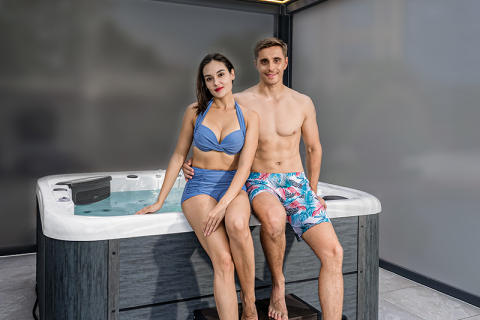
- Home
- >
News
When not in use, it's recommended to keep the tub as dry as possible to avoid water accumulation. When using a tarp, avoid leaving water in the tub for extended periods. Ensure that the tub is drained and the surface is dry after each use.
A water softener is a product specifically designed to reduce calcium and magnesium ions in water and is commonly used in home water softening systems. For outdoor whirlpool spa tubs, users can use a water softener when filling the water to reduce the hardness of the water.
Six major health benefits of an outdoor whirlpool hot tub: 1. Relieves muscle and joint pain 2. Improves sleep quality 3. Reduces stress and anxiety 4. Promotes blood circulation and cardiovascular health 5. Improves skin health 6. Promotes recovery and relieves post-exercise soreness
Possible reasons for feeling weak after using a whirlpool spa hot tub: 1. The effect of hot water on blood pressure 2. Imbalance in body temperature regulation caused by excessive water temperature 3. Fatigue caused by excessive relaxation 4. Increased burden on the cardiovascular system 5. Weakness caused by hypoglycemia 6. Dehydration and electrolyte imbalance
A heating system with a power of 3kW may take 6 hours to heat a 2000-liter bathtub water to 40°C, while a heating system with a power of 6kW may only take 3 hours. When choosing a bathtub, users can choose the appropriate heating power according to their needs.
The frequency of use of the whirlpool jacuzzi bathtub directly affects the difficulty of cleaning. Frequently used bathtubs will have more pollutants such as grease, sweat, and cosmetics in the water, which will increase the cleaning task. Infrequently used bathtubs are relatively easy to maintain and clean.
The liver and kidneys are the main detoxification organs of the human body. They maintain the health of the body by filtering toxins and metabolic waste from the blood. The whirlpool hot tub not only promotes blood circulation, but also enhances the working efficiency of these two organs through the heating water temperature and massage effect.
The water flow generated by the nozzle of a whirlpool hot tub has a strong impact force. This high-pressure water flow is mainly designed to massage the muscle groups and skin of the body. When the head is exposed to this high-intensity water flow, it may feel uncomfortable or even risk suffocation.
The most common heating failures of whirlpool hot tubs are usually related to power supply problems. Since heating systems rely on electricity to power heating elements and other key components, an interruption or instability in the power supply may be the root cause of a tub that fails to heat up.
If the whirlpool hot tub filtration system cannot effectively remove dirt and impurities from the water, the water quality may be polluted, resulting in turbid water, odor, and even health problems such as skin allergies. By regularly replacing the filtration system, you can ensure that the water quality is always in the best condition and provide a safe spa environment.
The reasons for chlorine depletion in outdoor whirlpool spa tubs are: 1. Temperature 2. Frequent use of whirlpool spa tubs 3. Organic contamination 4. Number and weight of spa users 5. Environmental factors (pollutants, dust, pollen, insects) 6. Chemicals and detergents
• A 300-gallon whirlpool hot tub weighs approximately 300 gallons × 8.34 pounds = 2,502 pounds (about 1,134 kilograms) when filled with water • A 600-gallon whirlpool hot tub weighs approximately 600 gallons × 8.34 pounds = 5,004 pounds (about 2,270 kilograms) • A 1,000-gallon whirlpool hot tub weighs approximately 1,000 gallons × 8.34 pounds = 8,340 pounds (about 3,785 kilograms) when filled with water












